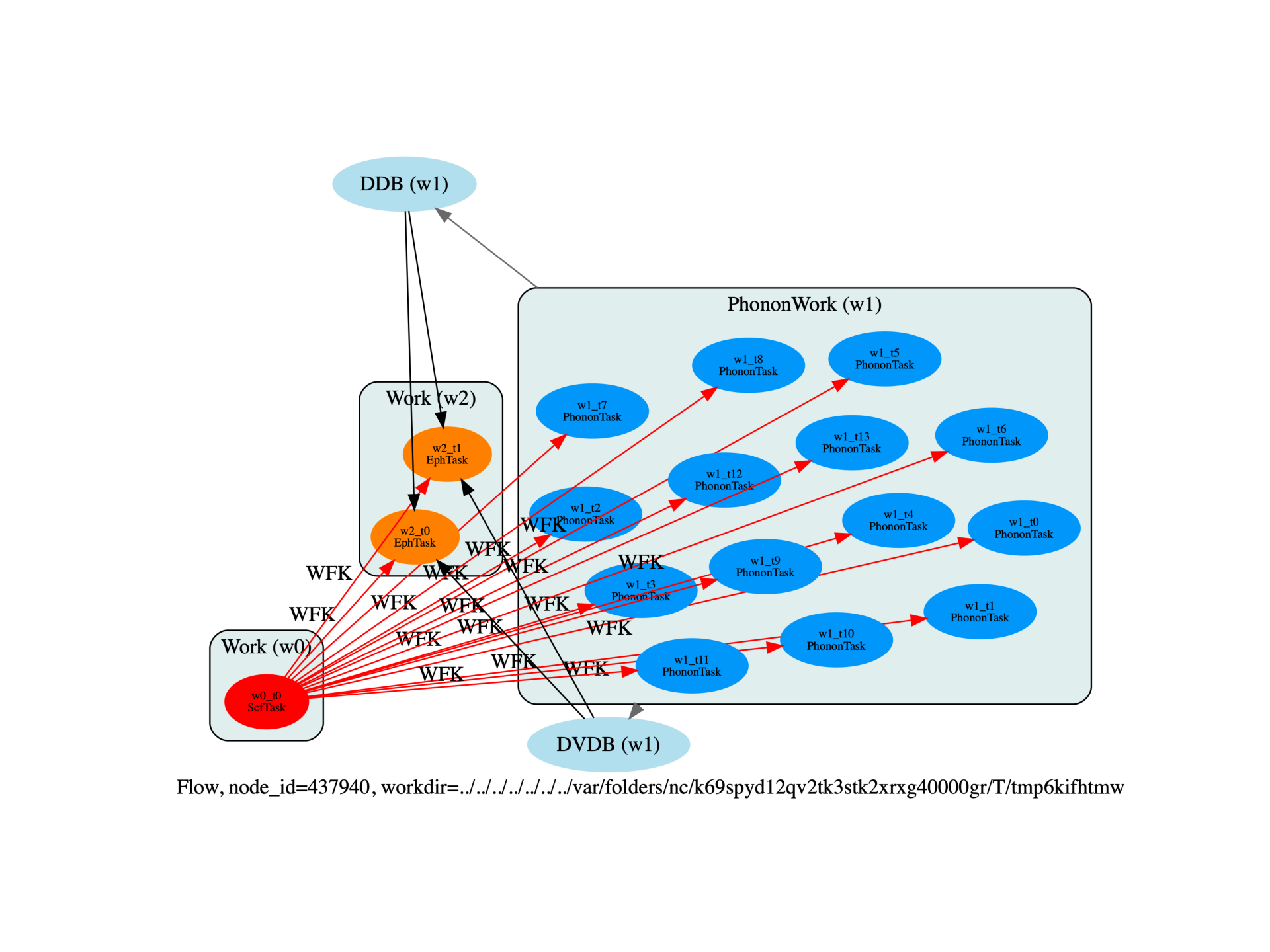Note
Go to the end to download the full example code.
Isotropic superconductivity
This flow computes the phonon linewidths and the isotropic Eliashberg function in Al.

import sys
import os
import abipy.data as abidata
import abipy.abilab as abilab
import abipy.flowtk as flowtk
def build_flow(options):
# Working directory (default is the name of the script with '.py' removed and "run_" replaced by "flow_")
if not options.workdir:
options.workdir = os.path.basename(sys.argv[0]).replace(".py", "").replace("run_", "flow_")
# Preparatory run for E-PH calculations.
# The sequence of datasets makes the ground states and
# all of the independent perturbations of the single Al atom
# for the irreducible qpoints in a 4x4x4 grid.
# Note that the q-point grid must be a sub-grid of the k-point grid (here 8x8x8)
pseudos = abidata.pseudos("Al.oncvpsp")
structure = abilab.Structure.from_abivars(
acell=3 * [7.5],
rprim=[0.0, 0.5, 0.5,
0.5, 0.0, 0.5,
0.5, 0.5, 0.0],
typat=1,
xred=[0.0, 0.0, 0.0],
ntypat=1,
znucl=13,
)
same_structure = abilab.Structure.fcc(a=7.5, species=["Al"], units="bohr")
assert same_structure == structure
gs_inp = abilab.AbinitInput(structure, pseudos)
gs_inp.set_vars(
ecut=8.0,
nband=5,
occopt=7, # include metallic occupation function with a small smearing
tsmear=0.04,
tolvrs=1e-7,
)
# The kpoint grid is minimalistic to keep the calculation manageable.
gs_inp.set_kmesh(
ngkpt=[8, 8, 8],
shiftk=[0.0, 0.0, 0.0],
)
# Phonon calculation with 4x4x4
ddb_ngqpt = [4, 4, 4]
qpoints = gs_inp.abiget_ibz(ngkpt=ddb_ngqpt, shiftk=[0, 0, 0], kptopt=1).points
flow = flowtk.Flow(options.workdir, manager=options.manager)
work0 = flow.register_scf_task(gs_inp)
ph_work = flowtk.PhononWork.from_scf_task(work0[0], qpoints)
flow.register_work(ph_work)
eph_work = flow.register_work(flowtk.Work())
eph_deps = {work0[0]: "WFK", ph_work: ["DDB", "DVDB"]}
for eph_ngqpt_fine in [(4, 4, 4,), (8, 8, 8)]:
# Build input file for E-PH run.
eph_inp = gs_inp.new_with_vars(
optdriver=7,
ddb_ngqpt=ddb_ngqpt, # q-mesh used to produce the DDB file (must be consistent with DDB data)
eph_intmeth=2, # Tetra method
eph_fsewin="0.8 eV", # Energy window around Ef
eph_mustar=0.12, # mustar parameter
eph_ngqpt_fine=eph_ngqpt_fine, # Interpolate DFPT potentials if != ddb_ngqpt
)
# Set q-path for phonons and phonon linewidths.
eph_inp.set_qpath(20)
# TODO: Define wstep and smear
# Set q-mesh for phonons DOS and a2F(w)
eph_inp.set_phdos_qmesh(nqsmall=16, method="tetra")
eph_work.register_eph_task(eph_inp, deps=eph_deps)
flow.allocate(use_smartio=True)
return flow
# This block generates the thumbnails in the AbiPy gallery.
# You can safely REMOVE this part if you are using this script for production runs.
if os.getenv("READTHEDOCS", False):
__name__ = None
import tempfile
options = flowtk.build_flow_main_parser().parse_args(["-w", tempfile.mkdtemp()])
build_flow(options).graphviz_imshow()
@flowtk.flow_main
def main(options):
"""
This is our main function that will be invoked by the script.
flow_main is a decorator implementing the command line interface.
Command line args are stored in `options`.
"""
return build_flow(options)
if __name__ == "__main__":
sys.exit(main())
Total running time of the script: (0 minutes 6.174 seconds)